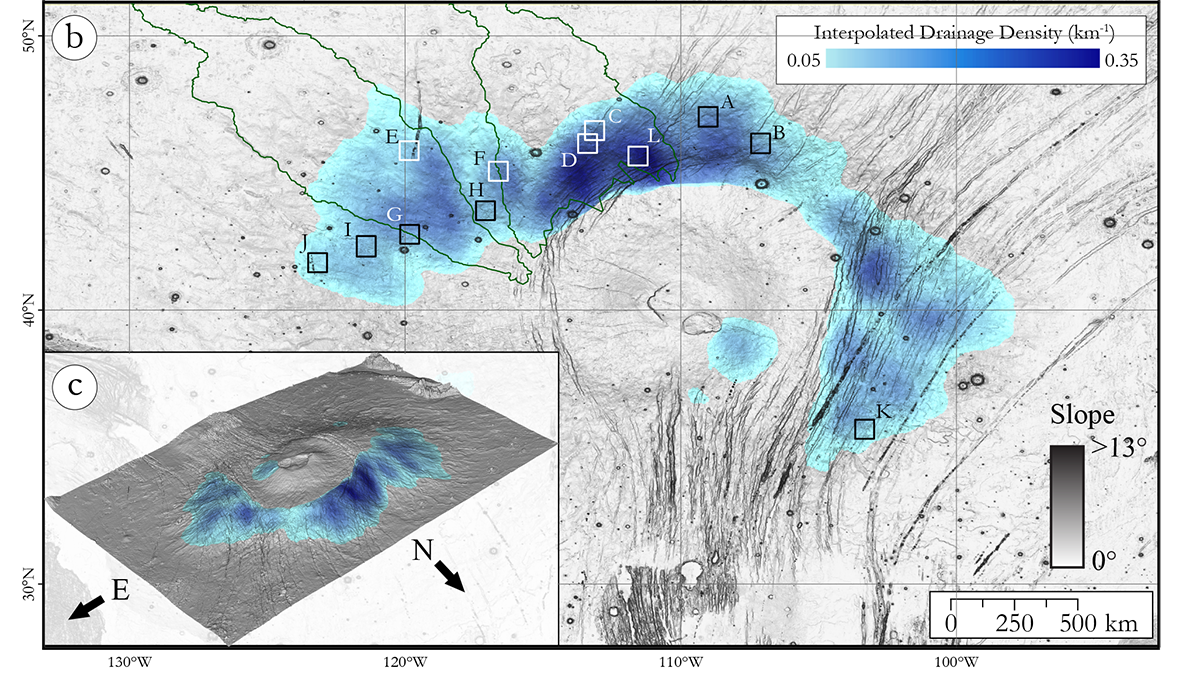Editors’ Highlights are summaries of recent papers by AGU’s journal editors.
Source: Earth and Space Science
The preservation of ancient Martian Valley Networks has been extensively examined to decipher the past climatic conditions and provide critical constraints for understanding the habitability of ancient Mars. However, the valleys on Alba Mons are frequently ignored in global studies due to their young Amazonian age (younger than 3 billion years).
Scheidt et al. [2025] provide a detailed mapping of the rivers that have formed on this volcano, belonging to the Tharsis volcanic province. The detailed morphological analysis of these reveals mature drainage systems, with characteristics comparable to precipitation-dominated drainage systems on Earth. The valley networks on Alba Mons are attributed to surface runoff from a combination of rainfall, snow, and ice melt. This study offers therefore intriguing insights into the Amazonian climate and the possible relationships between volcanic activity and fluvial processes.
Citation: Scheidt, S. P., Crown, D. A., & Berman, D. C. (2025). Mapping fluvial valleys on the flanks of Alba Mons: Implications for Amazonian watershed development in Northern Tharsis, Mars. Earth and Space Science, 12, e2024EA003967. https://doi.org/10.1029/2024EA003967
—David Baratoux, Editor, Earth and Space Science

